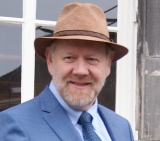|
Future orientation is the Fourth of the Seven Competences of the Sustainably Competent Professional: it's the 'F' in RESFIA+D.
> For the numbered notes, such as (1), see below.
> Download RESFIA+D, including this page, as a set of spreadsheets in English, German or Dutch: see RESFIA+D: The introduction.
Future Orientation: A sustainably competent professional thinks and acts on the basis of a perspective of the future.
Level 3: Apply | Level 4: Integrate | Level 5: Improve | Level 6: Innovate |
F1. Think on different time scales, flexibly zooming in and out on short- and long-term approaches
> In concrete working situations, you recognize and describe operational (1) methods for the performance and improvement of your work. > You contribute to the application of these methods, and thus contribute to short term (2) improvements. | > In the case of concrete work related problems, you recognize and describe the differences between short-term methods aiming at reducing the symptoms and long-term (2) methods aiming at eliminating causes. > You contribute to the application of symptom reducing methods based on the operational policy of the organization or team you belong to. | > In the case of work related problems, you contribute to the design of a solution strategy based on a carefully selected combination of short- and long-term methods. > You contribute to the implementation of this strategy based on the tactical (3) policy of the organization or team you belong to. | > You contribute to the (re)definition (4) and the application of the identity and the mission (5) and of the strategic (6) policy of the organization you belong to. > You involve present and expected future trends in your working field and in society. > You do that on every conceivable time scale, from short-term to deep time. (7) |
F2. Recognise and utilise non-linear processes
> You describe the possible non-linear or even unexpected developments and effects on the short term (2) of your professional activities. > In the planning and implementation of your work, you take its conclusions into account. | > You describe the possible non-linear or even unexpected developments and effects of your professional activities and those of the teams (8) or the organisation you belong to on a middle long term. (2) > In the planning and implementation of your work, you take its conclusions into account. | > You do this also on the long term. (2) > You use these insights in a demonstrable way to design or improve the work of you and your teams. > In the coming years, you keep a keen eye on new developments (9) that may be relevant to your work.
| > You use these insights in a demonstrable way to fundamentally (re)design the work, the goals, the methods and the working conditions of you and your team. > In the coming years, you continue to rethink your conclusions, keeping your insights up-to-date and, whenever necessary, revising your designs. |
F3. Think and act innovatively, creatively, out of the box
> You perform a functional analysis, that is: you derive the associated needs or expectations of users from the directly visible function of a service, product or process. > You deepen this functional analysis by determining which deeper needs are behind the apparent direct needs the user is actually looking for. | .> You perform this functional analysis in a series of layers or steps, looking for fundamental needs behind the apparent direct needs. (10) > You determine what the consequences for sustainability are when these needs are met without restriction. | > You find alternative ways to meet these underlying needs. > You determine the main consequences for sustainable development of each of the alternatives found, thus enabling to make choices. > Based on this, you draw conclusions about the best, i.e. the most sustainable and at the same time feasible solution, and contribute to its implementation. | > You perform the functional analysis in complex situations in which there are quite a few conflicting interests that are difficult to weigh up against each other. > Together with others, in a transdisciplinary approach, you arrive at innovative, perhaps unexpected and at the same time realistic recommendations or decisions based on a substantiated consideration. (11) > Following this transdisciplinary approach, you work with others on the implementation of the chosen solutions. |
1. Operational methods: methods that can be applied immediately or on short notice, possibly but not necessarily on the basis of tactical or strategic plans.
2. Short, middle long and long term: dependent on the context. In many situations a suitable guiding line is: Short term: about 1 or 2 years at most. Middle long term: up to about 5 or 10 years. Long term: up to about 25 or 50 years. Longer than that is referred to as deep time.
3. Tactical policy: policy on a middle long term, aiming at the realization of concrete goals of the organization, possibly but not necessarily on the basis of tactical or strategic plans.
4. Redefining of the mission: Abandoning existing views about the mission of an organization, and redefining from the beginning why and to what purpose the organization exists.
5. Identity and Mission: fundamental principles and objectives of an organization, the reason why it exists. Often made explicit in a ‘mission statement’.
6. Strategic policy: policy on a long term, aiming at the realization of fundamental goals, based on the mission of the organization, or redefining these goals or the mission.
7. Deep time: long to very long term. Depending on the context: tens, hundreds or thousands of years, or even longer: think e.g. of radioactive waste with half-lives of tens of thousands of years; or of the Sixth Extinction, with a recovery time of millions of years.
8. E.g. a student group, a department, a company, a commission.
9. Developments: e.g. scientific, technological, societal, political, infrastructural, financial, trade and market developments.
10. In many cases this concerns needs or expectations the persons involved are not aware of.
11. In such a weighing aspects are considered like: sustainability, finances, functional demands, realisation, acceptability etc.

